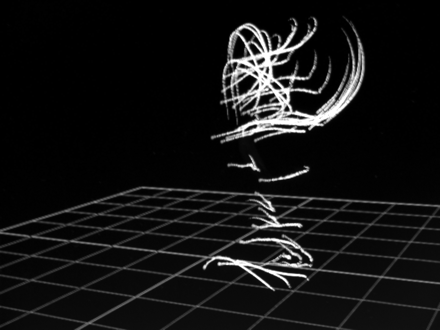Associated motion capture user categories

Performing arts use motion-capture tools for activities ranging from live productions to creative screen-bound works, choreographic notation and archiving. These activities have shaped original interdisciplinary platforms, combining artistic performance skills with research from sectors such as biomechanics, sensor development, information processing and display. While captured human movement data could be theoretically interesting to a variety of end-users, its actual usefulness depends on how effectively data retrieval and analysis can be performed. Motion-captured data that is presented in text form is difficult to make accessible for the people who were not involved in the capturing of the data, as it requires contextualisation and “translation” before it can be understood, particularly if it is to be used by people from different disciplines.
The aim of the AMUC project was to build a prototype sketch retrieval client to aid in the exploration of motion-capture archives. It was an interdisciplinary project, bringing together people from the fields of computer science, biomechanics, dance and other creative arts. The AMUC prototype harnessed graphic input via an electronic tablet as a query mechanism, with time and position signals obtained from the sketch being mapped to the properties of data streams stored in the motion-capture repository. As well as proposing a pragmatic solution for exploring motion-capture datasets, the project demonstrated the conceptual value of iterative prototyping in innovative interdisciplinary design.